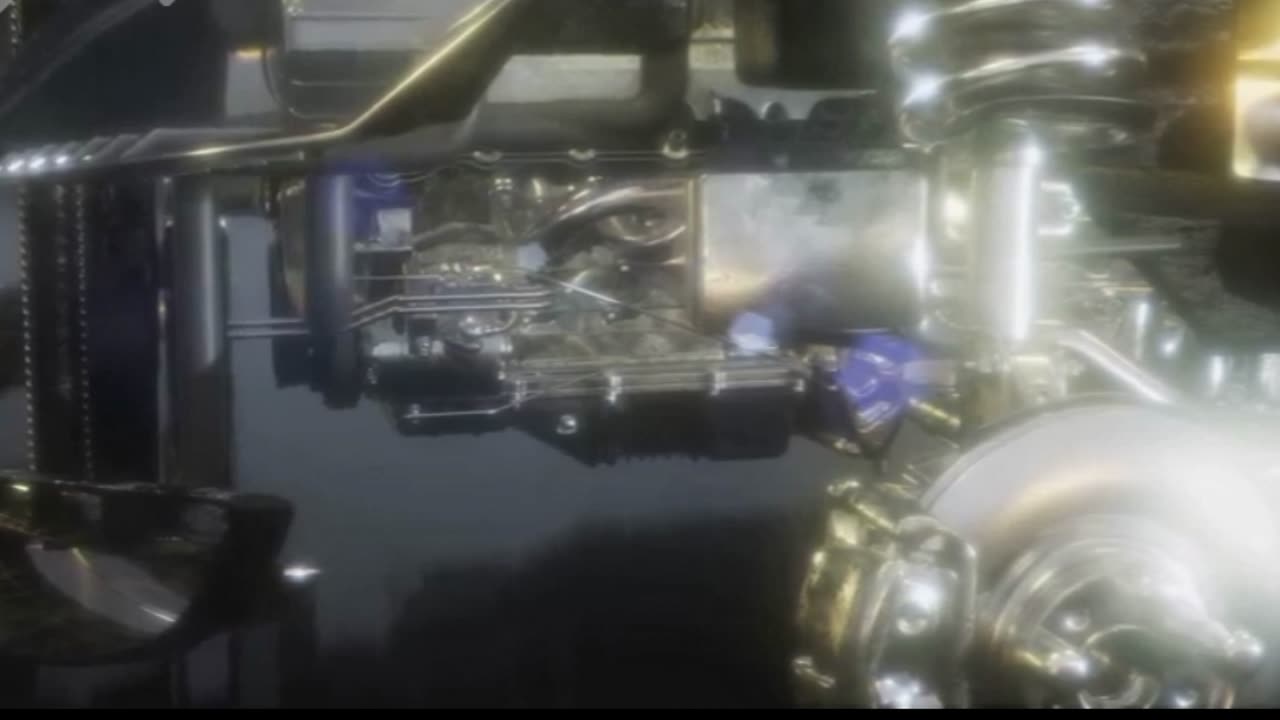Premium Only Content

How a Four-Stroke Engine Powers Your Ride!
Scene 1: Engine side-view – transparent overlay showing inner mechanics
The four-stroke engine – a marvel of mechanical engineering.
It powers most of the vehicles we drive today.
But how does it work?
Let’s break it down, stroke by stroke.
Scene 2: Piston inside cylinder – Intake stroke in motion
Stroke 1: The Intake Stroke
The piston moves downward.
The intake valve opens.
A mixture of air and fuel is drawn into the combustion chamber.
Think of it as the engine breathing in.
Scene 3: Compression – valves closed – piston rising
Stroke 2: The Compression Stroke
The piston rises again, compressing the air-fuel mixture.
This increases pressure and temperature – preparing for ignition.
It’s like cocking a spring – ready to release power.
Scene 4: Spark ignition – explosion – piston pushed down
Stroke 3: The Power Stroke
The spark plug fires.
BOOM – a small explosion pushes the piston down with force.
This is where the engine generates power.
It converts fuel into kinetic energy.
Scene 5: Piston rising – exhaust valve opens – fumes escape
Stroke 4: The Exhaust Stroke
The piston rises one last time.
The exhaust valve opens.
Burned gases are expelled from the chamber.
The engine breathes out.
Scene 6: Crankshaft rotating, showing smooth motion
These four strokes – intake, compression, power, and exhaust – happen in rapid succession.
Connected to a crankshaft, they transform linear motion into rotational force.
This is what spins your wheels.
Scene 7: Wide shot – engine running, car moving
From raw fuel to motion on the road – this is the magic of internal combustion.
Simple. Reliable. Powerful.
The four-stroke engine.
A century-old technology… still roaring today.
End Scene: Logo + Like & Subscribe call to action
Want to see more tech explained like this?
Hit like, subscribe, and ride with us into the mechanics of tomorrow.
-
 LIVE
LIVE
Kimberly Guilfoyle
2 hours agoCartel Strikes: Breaking News Coverage! | Ep.251
587 watching -
 1:20:15
1:20:15
vivafrei
1 hour agoRFK Jr. Takes on the Pharma WHOORES! Toddler-Assaulter Granted BAIL? COMPLYE WITH CRIMINALS! & more
35.7K20 -
 LIVE
LIVE
LadyDesireeMusic
1 hour agoLive Piano Request - Anti Brain Rot - Support Culture Shift
176 watching -
 LIVE
LIVE
The HotSeat
1 hour agoTrump’s Parade = Mocked, China’s Parade = Praised: Leftist Hypocrisy EXPOSED
604 watching -

The Quartering
2 hours agoRFK Jr Goes NUCLEAR, Horrible Tomb Raider News, Anti-White Male Propaganda
70.2K16 -
 LIVE
LIVE
Dr Disrespect
5 hours ago🔴LIVE: Hell Is Us Launch - DR DISRESPECT’s First Look at the Scariest Game of 2025!
1,315 watching -
 LIVE
LIVE
Pop Culture Crisis
2 hours agoSabrina Carpenter Wants Feminist Approval, Demonic Rituals at Burning Man? | Ep. 910
372 watching -
 11:17
11:17
Dr. Nick Zyrowski
29 days agoTop 10 No CARB No SUGAR Foods That Will Change Your Health
9.51K4 -
 LIVE
LIVE
Chrissie Mayr
2 days agoChrissie Mayr's Content Hotel at The Villa Roma! Anthony Cumia, Dave Landau, Violet
70 watching -
![[Ep 741] RFK Jr. Hits Back at Rabid Dems | Portland Antifa Terrorists | The Evil That is the Left](https://1a-1791.com/video/fww1/bb/s8/1/W/U/c/f/WUcfz.0kob-small-Ep-741-RFK-Jr.-Hits-Back-at.jpg) LIVE
LIVE
The Nunn Report - w/ Dan Nunn
1 hour ago[Ep 741] RFK Jr. Hits Back at Rabid Dems | Portland Antifa Terrorists | The Evil That is the Left
146 watching